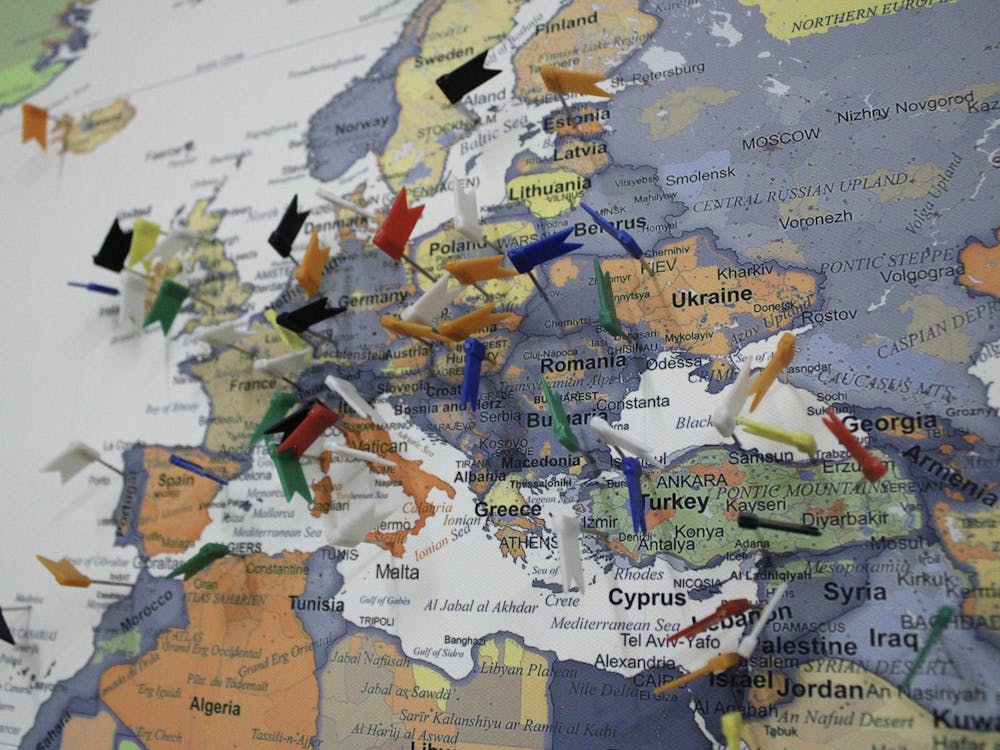Last semester, Opinion columnist Hasan Khan heralded Buddies on Call as “exactly the type of reaction students should have to tragedies that affect our University,” in “An end to slacktivism.” Founder Jack Capra quickly coordinated a HooApps app, Google Voice technology and secured The Women’s Center as a nighttime headquarters. He interviewed 150 candidates, selecting an executive board and 96 buddies. Yet Buddies will not be operational in the near future: in January, Capra learned Student Council could no longer facilitate the initiative. Buddies’ predicament alters our conception of what activism and “slacktivism” can mean at the University. While student self-governance give us more ability to enact change, our efforts face delays by practical barriers, the necessity of sustainability and a culture of tradition.
“Activism” is a term used quite loosely today, often to describe any philanthropy, awareness-raising or participation in an initiative. Such use is too unconstrained, as previously argued by Opinion columnist George Knaysi in his take on the ALS Ice Bucket Challenge. The word’s definition actually entails a high level of involvement and commitment. Activism is “a doctrine or practice that emphasizes direct vigorous action especially in support of or opposition to one side of a controversial issue,” according to Merriam-Webster. With this in mind, the pejorative of “slacktivism” ought not to denounce activities that were never activism at all, including most organized altruistic activities online or on grounds. Donating three dollars to Wikipedia, buying Challah for Hunger and working your fraternity’s philanthropy event does not an activist make.
Delineating what activism involves is crucial, as it prescribes what an activist should theoretically do. By definition, an activist seeks the most direct and vigorous action he can pursue to support his cause. For University students, this has particular meaning. While we may perceive boycotts, protests and sit-ins as the toolkit of an activist, student self-governance allows us more direct options. In many cases, the changes we seek to create are ones we are able to do ourselves.
Self-governance can therefore empower change beyond what our administrators and elected leaders — people less invested in the cause than the activist — are willing to do. Capra and Buddies seek to make the University community feel and be safer. Rather than lobby the administration and hope for change, they are creating and executing a solution they deem most fit. This same spirit allows activists to pursue initiatives not as ends in themselves, but to prove their commitment to a cause. In response to AccessUVa changes last academic year, Student Council encouraged fourth-years to donate their class gift to the fund. This monetary commitment demonstrated to administrators and alumni that financial aid is a chief concern of the student body, perhaps even more so than the silent Board of Visitors meeting protest. While this activism has not yet led to institutional change, University Bookstore Executive Director Jon Kates cited community response as the impetus for donating bookstore profits to AccessUVa.
Activists often seek to incite “change,” but accomplishing change is meaningless if followed by reversion back to the status quo. Therefore, activists must look past the momentary hype to their efforts’ sustainability. Can their legacy extend beyond graduation? To this respect, I agree with columnist John Connolly that the University’s emphasis on tradition is actually healthy for activism — he writes, “Our reverence for tradition, combined with a thorough examination of issues and a keen sense of when to act, gives this University the confidence to uphold the traditions that make it great and the strength to change them when necessary.” While careful planning delays action, it increases the likelihood of success. The University features few protests each year, but less “upheaval for the sake of upheaval” allows each initiative to be taken seriously. Capra prefers the expansion of the SafeRide program to his own initiative, but understanding SafeRide’s expense, chose to create Buddies as a more pragmatic solution to student late-night safety.
The current agenda of Buddies on Call demonstrates the mundane reality of assessing the feasibility and sustainability of plans. While Capra’s initiative is clearly noble, its target user is likely alone, intoxicated and/or lost. While its effectiveness derives from Buddies’ work with the greater student body, reaching beyond its volunteers is risky. This presents a significant liability the University will not cover under Student Council insurance. Buddies now hopes to become a 501(c)(3) nonprofit corporation and purchase insurance themselves. They also lowered their expectations. “We’re shrinking back our operation. Our goal is for when we first launch to keep it small, to keep it on-Grounds and to make sure we can do everything perfectly,” Capra said in an interview.
The often-competing ideals of student self-governance and tradition at the University allow for true activism, but at the expense of expediency. This creates a gap in student support of causes which so-called “slacktivism” fills nicely. While these actions require little time or effort, they keep students from appearing apathetic in a culture of quality yet protracted change. This concern is cheap, but it still has a role. While tweeting #BringHannahHome, wearing the Love is Love t-shirt and attending vigils are not activism, they remind us our fellow Hoos are not unfeeling, despite a preference for well-calculated campaigns.
Elaine Harrington is an Opinion columnist for The Cavalier Daily. She can be reached at e.harrington@cavalierdaily.com.






